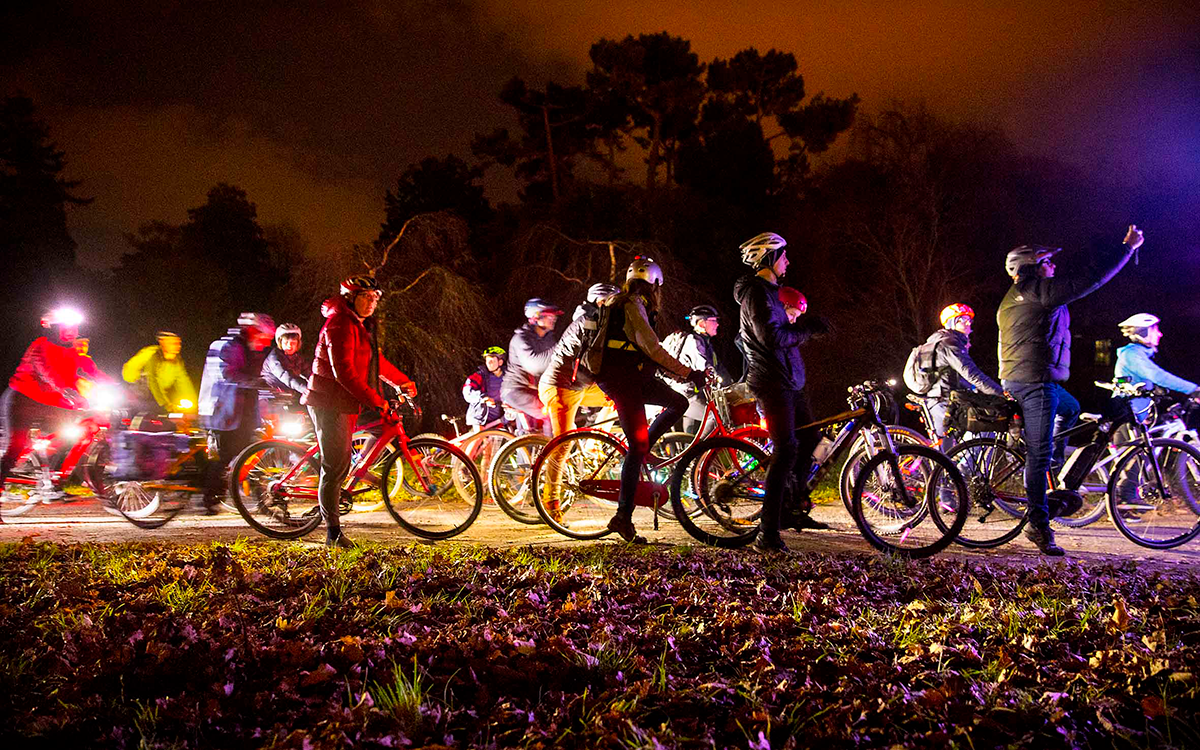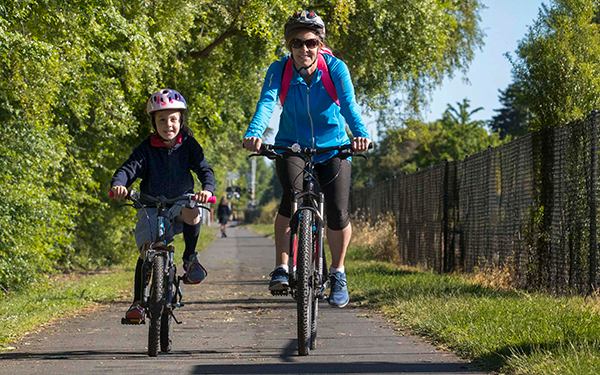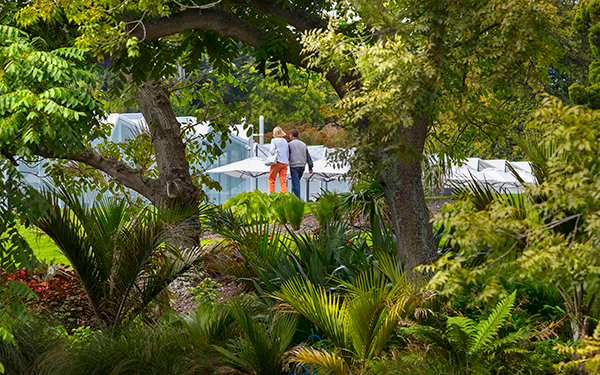Climate change is a global issue that provides significant challenges and risks, as well as opportunities, to communities in New Zealand and throughout the world.
Much of the responsibility for environmental planning and regulation falls on local government, however, councils cannot address these issues by themselves. Responding to climate change issues requires a consistent information base, innovative solutions and dialogue to agree on funding options.
There is a need for collaboration between central and local government, and between city, district and regional councils.
Collaboration is one of the guiding principles for addressing climate change that is contained within the Local Government Leaders Climate Declaration. I was proud to sign this declaration along with 31 other Mayors from throughout New Zealand in the lead-up to the Paris Accord.
The Declaration says we must work with the New Zealand Government to develop and implement an ambitious transition plan toward a low carbon and more resilient New Zealand. The important bit is that we do it together. The need to work together is also recognised at an international level.
Ahead of the UN Climate Change Conference in Paris 2015, I was invited to commit to the Compact of Mayors. Even though I wanted to do this, I held back until I knew we could deliver. The Compact of Mayors held a side summit in Paris declaring the collective agreements of cities across the globe. Following the Paris conference, a coalition has been formed between the Compact of Mayors and Covenant of Mayors to form the Global Covenant of Mayors for Climate and Energy. This new Global Covenant of Mayors for Climate and Energy is the largest global coalition of cities committed to climate leadership and is an important focus for City leaders in supporting the commitments made at the national level. The Compact standardises the way city climate data is reported and makes data available to the public.
As a council we are looking to join the Global Covenant of Mayors for Climate and Energy by undertaking an inventory of greenhouse gas emissions and hazards through CEMARS® (Certified Emissions Measurement And Reduction Scheme) before registering our commitment, creating reduction targets and establishing a system of measurement, and developing an action plan. For me, I want our commitment to be real. Signing up isn’t enough – it’s actually making it happen.
The Net Zero in New Zealand report, commissioned by GLOBE-NZ, a cross-political-party collaboration, provides an opportunity to stimulate discussion on a vital issue for today. The three scenarios presented in the report provide potential pathways to work towards the goal of net zero emissions domestically by 2050. The focus is on the decarbonisation of the energy sector and emissions from land.
For Christchurch, our biggest source of greenhouse gas emissions is from the way people and goods move around.
More compact and walkable communities as proposed by the Greater Christchurch Urban Development Strategy and our Replacement Christchurch District Plan will help reduce the need for some travel because people can more easily access the things they need on a daily basis, but zero carbon options are still needed for wider city accessibility.
Christchurch is investing in 13 major cycleway routes to create safe routes to school and work. The Council supports cycling education in most city schools and recent changes to the District Plan now require central city business to provide cycle parking facilities for staff and visitors. Approximately 13,000 bike trips are taken each day in, what is becoming once again, a cycle-friendly city. Smart bikes are being trialled as part of our public transport system with metrocards allowing payment for both bus and bike rides.
The Greater Christchurch Travel Demand behaviour programme is encouraging people out of their cars too. Through short and targeted conversations in the workplace, an amazing 30% more people are cycling, busing or walking to work each day. A recent survey found that cyclists and walkers were much happier than car users by the time they got to work. What this means for staff productivity is yet to be calculated, but I am sure it has a positive impact.
Electric vehicles must be part of the mix too. The first trial of a fully autonomous electric vehicle began at the Christchurch Airport in January this year. The trial is focussed on understanding how these vehicles could operate in this country, starting on private roads on the airport campus, with the long-term aim of moving to public roads once all regulatory approvals are in place. This is an incredibly exciting time in our history. Autonomous electric vehicles are part of the future and they are coming, ready or not. I’d rather be ready.
As a Council, we are working on establishing an electric car sharing scheme for use by the Council, government agencies, businesses and eventually residents. In Christchurch, we already have 17 public charging stations dotted around the city. There are at least two Fast chargers that form an important part of the national network called the “Electric Highway” that provides confidence to long distance travellers. Most of the 150+ electric vehicles registered in Christchurch will charge at home overnight.
It’s encouraging to see that with the right motivations and infrastructure, our community is embracing healthy and low carbon travel options.
I’ve told lots of people my favourite book is If Mayors Ruled the World. That usually gets a laugh, but the book isn’t about power – it’s about influence. When you have 75% of the world’s population living in large coastal cities, which we will by 2050, how can cities not be required to lead the way?
The boundaries between countries are political lines on maps – they don’t in themselves prevent the spread of disease, terrorism, a global financial crisis, the onset of climate change – it is at the city level that the capacity to prepare for and counter all or any of these is much more real. But do we as city leaders have the tools at our disposal that enable our citizens to make that happen? And when I say “enable our citizens to make that happen,” that is deliberate, because we cannot resolve these wicked issues on their own. Councils can’t do this for their communities any more than governments can do it for their cities.
I can restate my personal commitment as Mayor of Christchurch to a clean energy, zero carbon future, but that doesn’t make a difference if people think that lets them off the hook.
Councils can do so much – we can:
- promote walking, cycling, public transport and other low carbon transport options;
- work to improve the resource efficiency and health of homes, businesses and infrastructure in our districts; and we can
- support the use of renewable energy and uptake of electric vehicles.
Here in Christchurch, opportunities are very real and immediate as we continue to rebuild and indeed reimagine our city. We support urban design that encourages residential living near local amenities to enhance liveability and low carbon lifestyles. Our Civic Office is among the greenest office buildings in New Zealand and we want other community facilities based on the same sustainability principles. We offer free sustainability advisory services and incentives to businesses and to homeowners to improve water and energy efficiencies. But there is more that we can and must do.
We are a small city but we want to start the ball rolling.
Our opportunities flow from our chance to hardwire the adaptive, creative and innovative juices that have flowed since the earthquakes struck.
Although there is still more to do, our city is taking steps to measure and manage emissions and grow resilience. Being part of the Rockefeller 100 Resilient Cities programme enabled us to identify and then establish action plans to address our key vulnerabilities.
Eastern Christchurch remains a huge opportunity for us to showcase resilient approaches for low-lying and coastal communities. Consultation on potential uses for the Residential Red Zone around the Avon River will offer useful responses to rising seas and future floods. But as we know with climate change, prevention is better than cure.
Our job in local government may not be to “solve” climate change, but to show the world that it is possible to have a good quality of life in a vibrant carbon neutral city. Using co-creation, by working together, innovating and sharing, we can more effectively deliver on this vision. Net Zero New Zealand may be challenging to achieve, but it is a huge opportunity to improve and restore. Kiwis are resourceful and creative problem solvers.
To give future generations the same, or better opportunities than we have had, it is a problem that this generation must solve. While we have a long way to go, many communities and businesses are advancing on this vision and that is something to be very positive about. Given the complexity of this issue, awareness raising amongst communities and working strategically with other agencies will be required.
Governments can sign agreements, Mayors can sign declarations, but only citizens can change the world.
The Net Zero in New Zealand report provides a tool for planning for an uncertain future. It is a comprehensive starting point for future discussions on reducing emissions to achieve domestic emissions neutrality in the second half of the century. No single action will get the country to achieve domestic emissions neutrality, it requires a collective effort.






Leave a comment